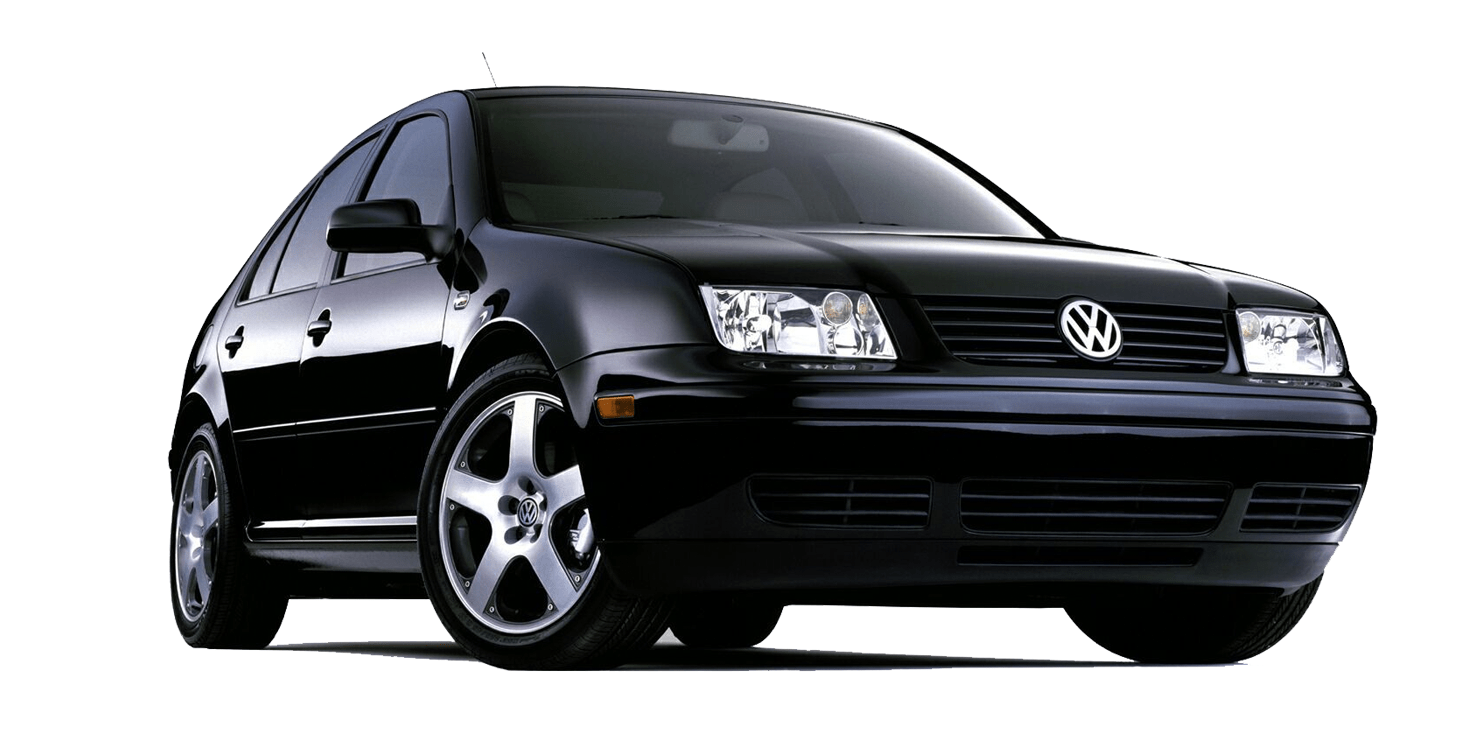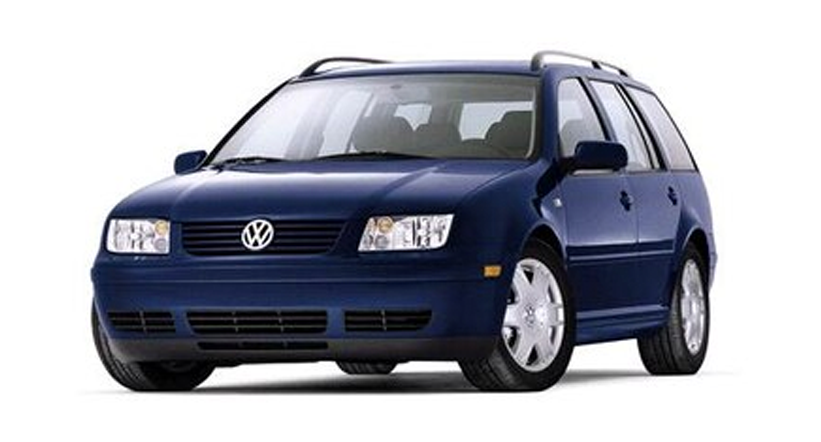It kind of hurts a little bit to focus on a car this, well, normal. It’s not that I mind, it’s more that it’s just feels weird to me, like if I suddenly had to give up eating food and instead chew on nutrient-impregnated orbs of putty — I could do it, if I had to. Well, this time my nutrient-impregnated orb is the fourth-generation Volkswagen Jetta, and I want to talk to you about it because I feel the design of this car is worth revisiting, much like a really great nutrient-impregnated chew-orb.
I don’t necessarily think I’ll be making any really radical observations here, and this is more an encapsulation of observations that I’ve had rattling around my head every time a Mark 4 Jetta rolls past, but the fundamental upshot of all this is that when it comes to small three-box sedan design, I think you could argue that this 1999 to 2006 (well, in various forms, it’s actually still in production in China) is a near ideal design.

As far as designs go, it’s not exactly flashy or attention-hungry. It’s overall an understated design, and I think for many people perhaps was almost ignorable, but ignorable in the way that something like Henry Dreyfuss’ Model 500 telephone was — something where the overall design was so balanced and distilled and just right for the job it was designed to do that you don’t even realise how good it is until you force yourself to stop recognising it a known object and to actually really see it for the first time, even if you’ve been surrounded by examples all your life.
The design vocabulary of this era of Jetta was firmly within a whole movement that was going on at VW during this time, under the leadership of Chief Designer Hartmut Warkus and very heavily defined by the work of J Mays and Freeman Thomas.
It was a design language that was very clean and unadorned, almost mathematical in its crisp precision and affinity for simpler, as opposed to more complex compound curves. Structural elements like panel cutlines were afforded special attention, with the forms of individual body panels designed to mesh satisfyingly into other panels, bumper skin cutlines, light inset areas, and so on.
We see these common design traits across a pretty wide spectrum of cars, from the Audi TT to the New Beetle to the Golf and Passat, and, of course, to the Jetta.
While I think all of the design coming out of VW/Audi at this time was pretty great, there’s something about the mundanity of a small sedan that makes me really appreciate the Jetta. It didn’t have a whole cultural heritage like the New Beetle or a certain techy cachet like the Audi TT, or even any upscale pretentions like the Passat or any of the bigger Audis.
The Jetta’s role was about as generic a “car” role as could be imagined. Maybe that’s why it’s so appealing — it’s basic done right. Here, let’s look at it a bit more:

I really don’t think there’s a bad angle for this car. It’s shockingly clean of ornamentation or brightwork — really, the only shiny bits on it are the VW bages and the car’s name, and that’s just fine.
It’s taut and compact, yet the wheels get a good amount of emphasis to give it an almost athletic stance, without being too showy. It’s maybe like the effect of going swimming with a long time reliable friend and being a little surprised to realise they have impressive abs, or something.
The shapes of the body panels and doors feel well-considered, too, and those trapezoid-ish taillights satisfyingly slot into the space between the bumper skin line, trunk shutline, and rear fender without any need for filling panels or strips or moulding or trim rings or anything like that.

Up front, the same understated motifs continue, with the grille being just a series of body-coloured or black louvers with one central bit of VW bling, and the parallelogram-shaped lights incorporated everything into those two, simple housings: headlights along the outer edges, with turn indicators and foglamps inset as little round units. Clean and orderly, single units for what on most other cars (and earlier variants of Jettas) would have been three independent units per side.
When you’re doing so much with so little, all the little details become more important. The front marker lamps, for example, aren’t just slapped on, but rather are formed by the shape of the inset, body-coloured impact strip on the bumper. The door handles are a streamlined version of the same basic design VW has been using since the Beetle era blending into the body by colour while not attempting to hide at the same time.

The proportions of the Mk4 Jetta are also deceptively simple and, somehow, just right. Where the Jetta started as a very angular Golf with a trunk pretty much stapled on, by the fourth generation that trunk had been well integrated into the overall form, where the car no longer felt like a hatchback wearing a novelty oversize fake arse.
As was the case with most three-box cars of the era, the rear deck height was significantly higher than the hood, though the Jetta’s beltline remains steadfastly horizontal. The overhangs aren’t exactly minimal, but they’re not huge, and they feel right for the proportions of the car.
Perhaps that rear wheel sneaks a bit more forward into the rear door than you’d expect. I think this actually helps enhance the emphasis of the wheels, more than anything, and keeps the car feeling pleasantly compact.

This basic Jetta design also transitions well into a wagon, which is not an easy feat, either. In the wagon version, the greenhouse feels more open and airy, with a generous amount of glass area, which certainly doesn’t hurt visibility, either.
I’ll admit, I’m not crazy about the chrome detailing on the grille of that one up there; look how much better it looks with the grille in black:

I mean, that’s just a handsome wagon! It looks purposeful and sporty without edging into too agressive or douchey; the chunky roof rack adds hint of ruggedness without shouting it. It just hits so many things so well, so subtly.
I wish I could in good conscience recommend these to people, but, thanks to early 2000s-Volkswagens’ affinity for check-engine-light-induced strokes, I’m not really sure I can.
And that’s a shame, because I don’t think Volkswagen improved on the design of these cars since this generation. Each update and redesign incorporated more and more distinctive elements that you would think give the car more character or attention, but, somehow, they all ended up just making the car more anonymous, more likely to blend into the crowd.

Even the smaller redesigns VW did for the Canadian (and other) market City Golf or the Chinese-market Lavida, still based on the Mk.4 body, just kind of lost the program.
There’s a fundamental purity in the unassuming, honest design of the original Mark 4 Jetta that just breaks when you try to add big chromy bits or more lights or anything else to it. It’s like a bubble; perfect as it is, poke it and it pops.
There’s a lesson here, and it’s one that, based on current trends in auto design, is being pretty effectively ignored by almost everyone. Except maybe Kia. It’s the old lesson of how less can be more, and how sometimes you can do something so right it’s hard to tell you’ve done anything at all.
It’s subtle, but it feels good to contemplate, both that concept and the Mark 4 Jetta. I think that’s worth taking a moment to remember. It’s likely you’ll see one of these in the background of your life in the next week or so; do yourself a favour and, when you do, just take a moment to really look at the thing.
I bet it’ll feel pretty good.
